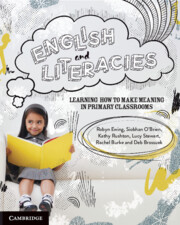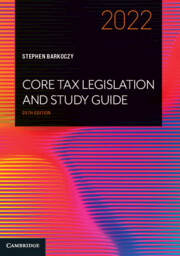Refine search
Actions for selected content:
36849 results in Cambridge Textbooks
4 - Law of Treaties
- from Part I - The Foundations of Public International Law
-
-
- Book:
- An Introduction to Public International Law
- Published online:
- 17 February 2022
- Print publication:
- 03 March 2022, pp 56-77
-
- Chapter
- Export citation
Part I - The Foundations of Public International Law
-
- Book:
- An Introduction to Public International Law
- Published online:
- 17 February 2022
- Print publication:
- 03 March 2022, pp 13-14
-
- Chapter
- Export citation
8 - International Organizations
- from Part I - The Foundations of Public International Law
-
-
- Book:
- An Introduction to Public International Law
- Published online:
- 17 February 2022
- Print publication:
- 03 March 2022, pp 141-161
-
- Chapter
- Export citation
14 - International Economic Law
- from Part II - The Branches of Public International Law
-
-
- Book:
- An Introduction to Public International Law
- Published online:
- 17 February 2022
- Print publication:
- 03 March 2022, pp 276-298
-
- Chapter
- Export citation
16 - International Environmental Law
- from Part II - The Branches of Public International Law
-
-
- Book:
- An Introduction to Public International Law
- Published online:
- 17 February 2022
- Print publication:
- 03 March 2022, pp 322-343
-
- Chapter
- Export citation
Foreword
-
- Book:
- An Introduction to Public International Law
- Published online:
- 17 February 2022
- Print publication:
- 03 March 2022, pp ix-x
-
- Chapter
- Export citation
Table of Cases
-
- Book:
- An Introduction to Public International Law
- Published online:
- 17 February 2022
- Print publication:
- 03 March 2022, pp xiii-xx
-
- Chapter
- Export citation
1 - Introduction
-
-
- Book:
- An Introduction to Public International Law
- Published online:
- 17 February 2022
- Print publication:
- 03 March 2022, pp 1-12
-
- Chapter
- Export citation
Copyright page
-
- Book:
- An Introduction to Public International Law
- Published online:
- 17 February 2022
- Print publication:
- 03 March 2022, pp iv-iv
-
- Chapter
- Export citation
7 - Immunities
- from Part I - The Foundations of Public International Law
-
-
- Book:
- An Introduction to Public International Law
- Published online:
- 17 February 2022
- Print publication:
- 03 March 2022, pp 120-140
-
- Chapter
- Export citation

English and Literacies
- Learning How to Make Meaning in Primary Classrooms
-
- Published online:
- 02 March 2022
- Print publication:
- 18 February 2022
-
- Textbook
- Export citation

Core Tax Legislation and Study Guide 2022
-
- Published online:
- 01 March 2022
- Print publication:
- 12 January 2022
-
- Textbook
- Export citation

The Road to Nursing
-
- Published online:
- 28 February 2022
- Print publication:
- 22 November 2021
-
- Textbook
- Export citation
10 - Developing knowledge about language and grammar in context
-
-
- Book:
- English and Literacies
- Published online:
- 02 March 2022
- Print publication:
- 18 February 2022, pp 227-248
-
- Chapter
- Export citation
5 - Learning to be ‘literate’: exploring contexts, complexities and possibilities for teaching about text
-
-
- Book:
- English and Literacies
- Published online:
- 02 March 2022
- Print publication:
- 18 February 2022, pp 100-123
-
- Chapter
- Export citation
1 - Literacies learning in the early years: fundamental concepts of text, identities and access to education
-
-
- Book:
- English and Literacies
- Published online:
- 02 March 2022
- Print publication:
- 18 February 2022, pp 6-28
-
- Chapter
- Export citation
Book list: children’s literature
-
- Book:
- English and Literacies
- Published online:
- 02 March 2022
- Print publication:
- 18 February 2022, pp 407-410
-
- Chapter
- Export citation
Index
-
- Book:
- English and Literacies
- Published online:
- 02 March 2022
- Print publication:
- 18 February 2022, pp 411-442
-
- Chapter
- Export citation
15 - Literacy across the curriculum
-
-
- Book:
- English and Literacies
- Published online:
- 02 March 2022
- Print publication:
- 18 February 2022, pp 349-374
-
- Chapter
- Export citation
Glossary
-
- Book:
- English and Literacies
- Published online:
- 02 March 2022
- Print publication:
- 18 February 2022, pp 400-406
-
- Chapter
- Export citation
